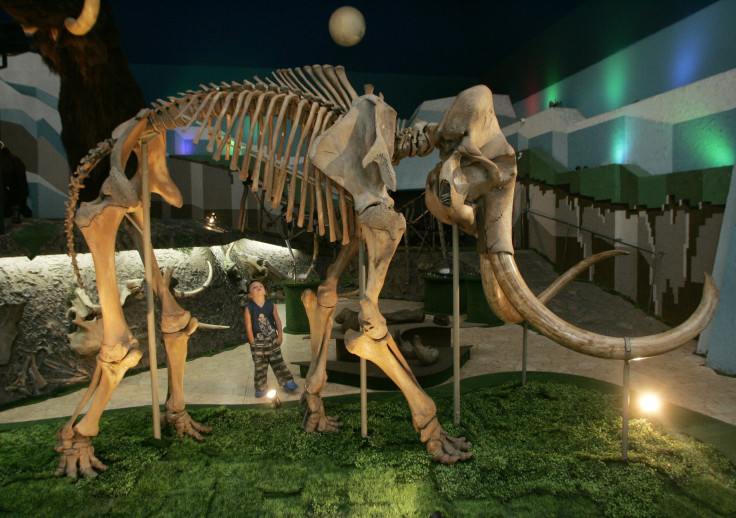Woolly Mammoth Extinction Partly Caused By Climate Change, Reveals New Study

Scientist now believe the extinction of the of the woolly mammoth was caused by more than just over-hunting.
As the result of new genetic analysis on mammoth remains discovered in North America and Europe, scientists now believe climate change played a major role in driving the massive Ice Age animals into extinction, reports The Daily Mail.
According to the research published by the Royal Society and lead by scientists at the Swedish Museum of Natural History, mammoth populations increased, then decreased between ice ages and difficult warmer periods, The Independent reports. The study also revealed that a specific mammoth type distinct to Europe was replaced by Siberian mammoths close to 30,000 years ago.
"We found a previous warm period some 120,000 years ago caused populations to decline and become fragmented in line with what we would expect for cold-adapted species such as the wooly mammoth," Dr. Eleftheria Palkopoulou of the Swedish Museum of Natural History said.
To reach its results, the team analyzed variations of DNA from 300 mammoth specimens collected from around the world. With this data, scientist were able to determine that mammoth numbers dipped to the tens of thousands but recovered greatly during the final Ice Age. But within 14,000 years, the cycle began again once the world began to warm up. The study also noted that in the major warming period of 120,000 years ago and 10,000 years ago, the mammoths became isolated to specific, northern habitats.
"This process culminated with a severe decline in population size that started when temperatures began to increase at the end of the last Ice Age," said Dr. Jessica Thomas of York University.
The study's lead researcher Dr. Love Dalen told the BBC that the new data offers new details about the population patterns of the mammoths. But the team continues to stress that the study doesn't offer any proof into what finally led to their extinction -- only what factors led to the large population decline of the animals.
“The picture that seems to be emerging is that they were a fairly dynamic species that went through local extinctions, expansions and migrations. It is quite exciting that so much was going on.”
© Copyright IBTimes 2025. All rights reserved.
Join the Discussion





















